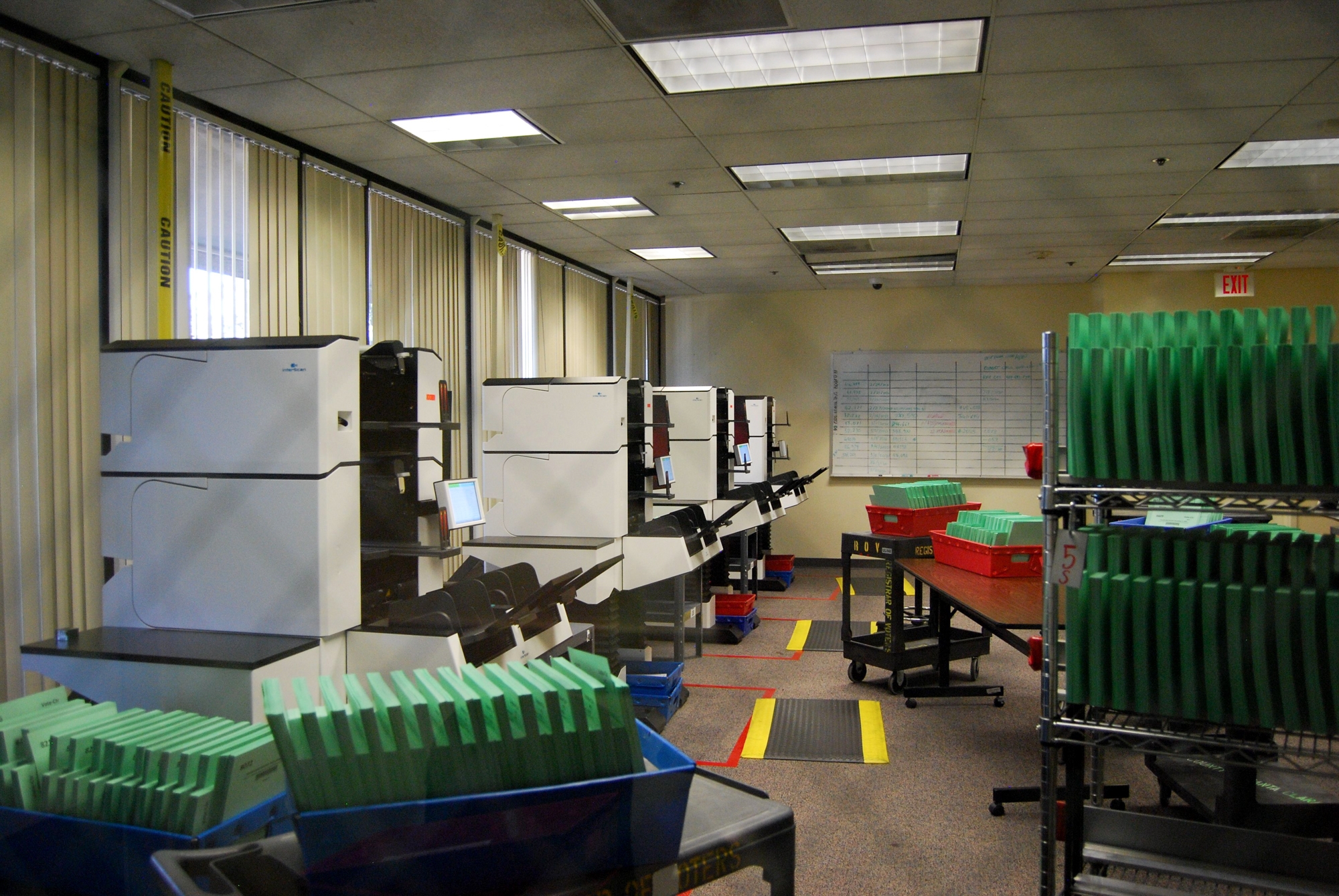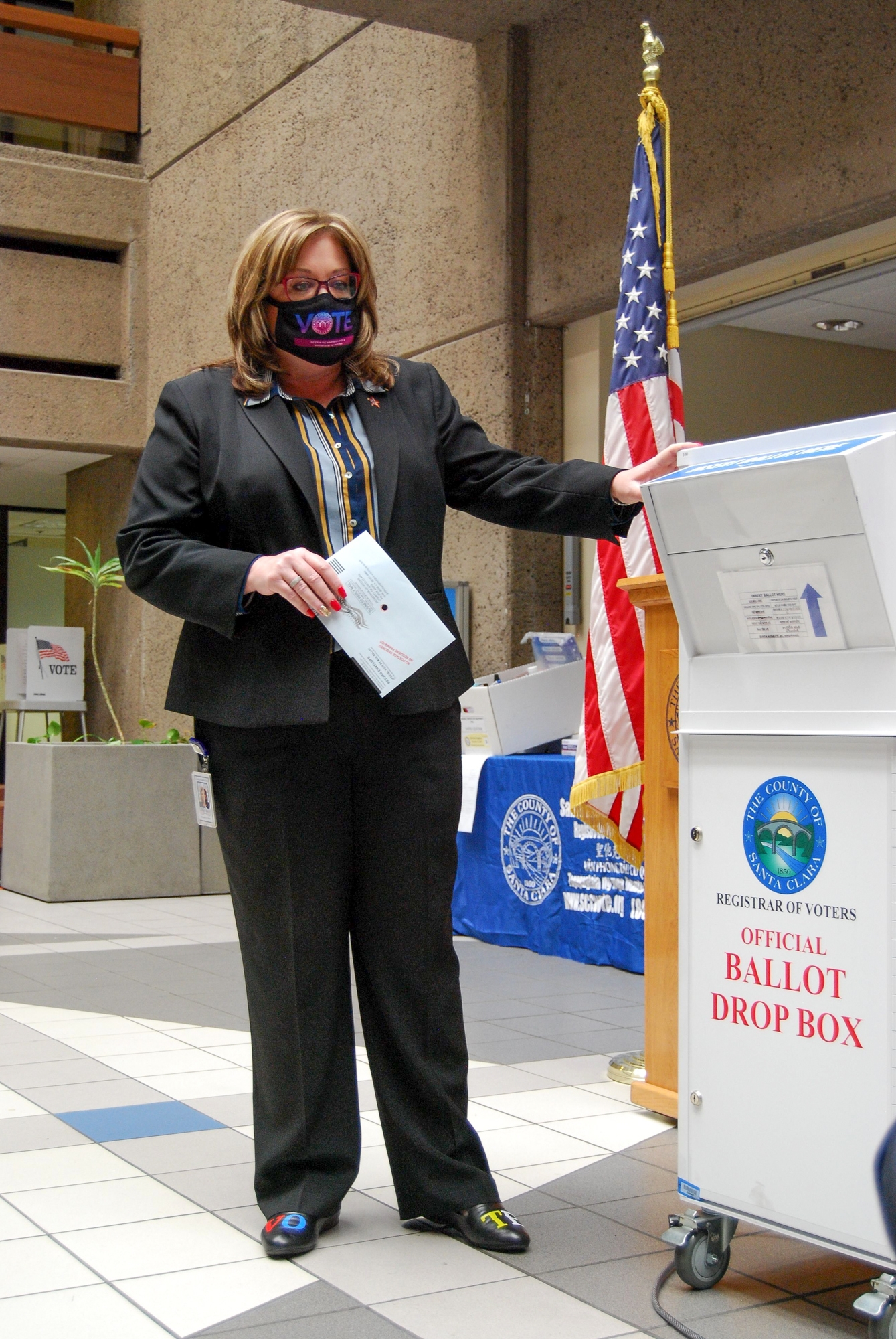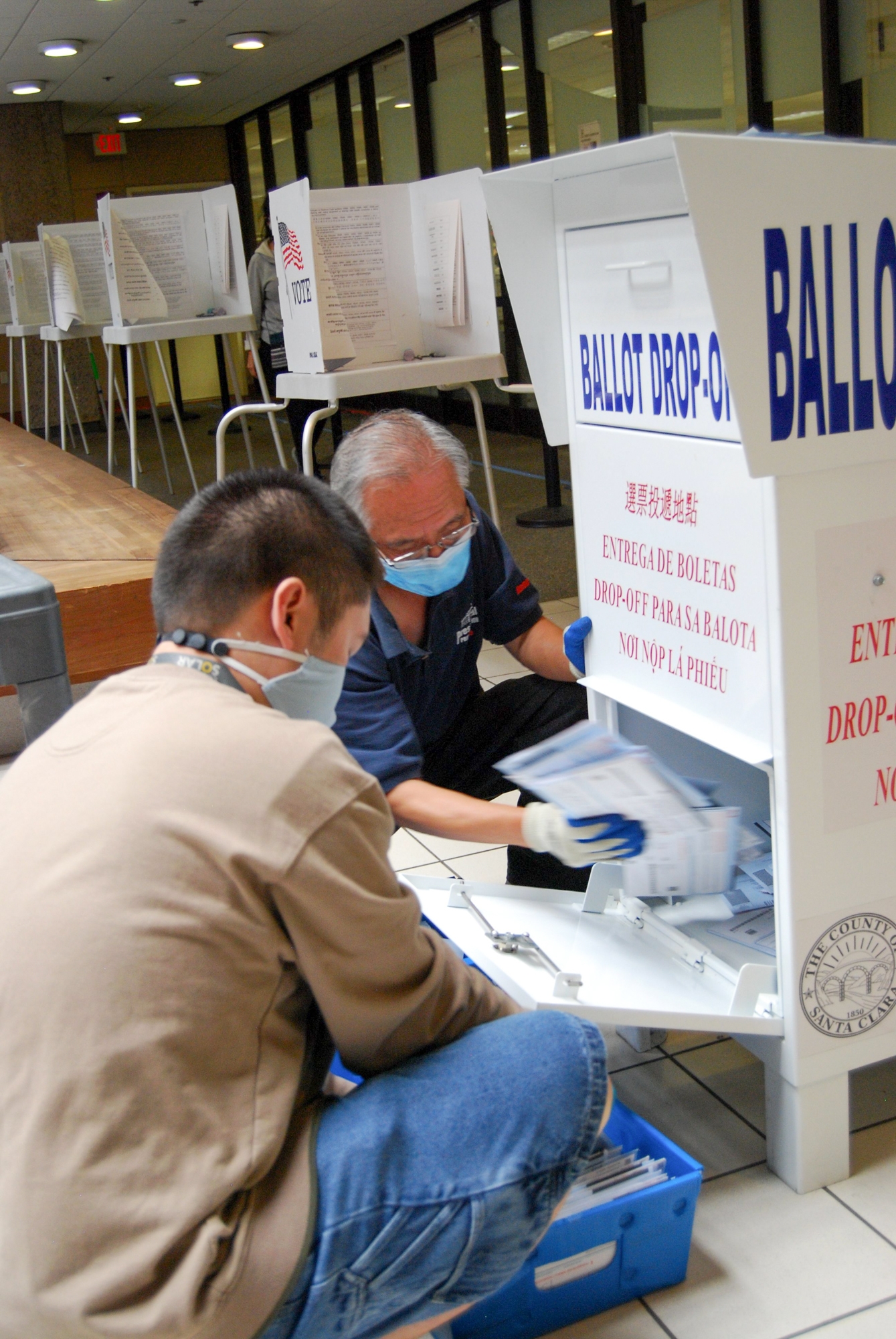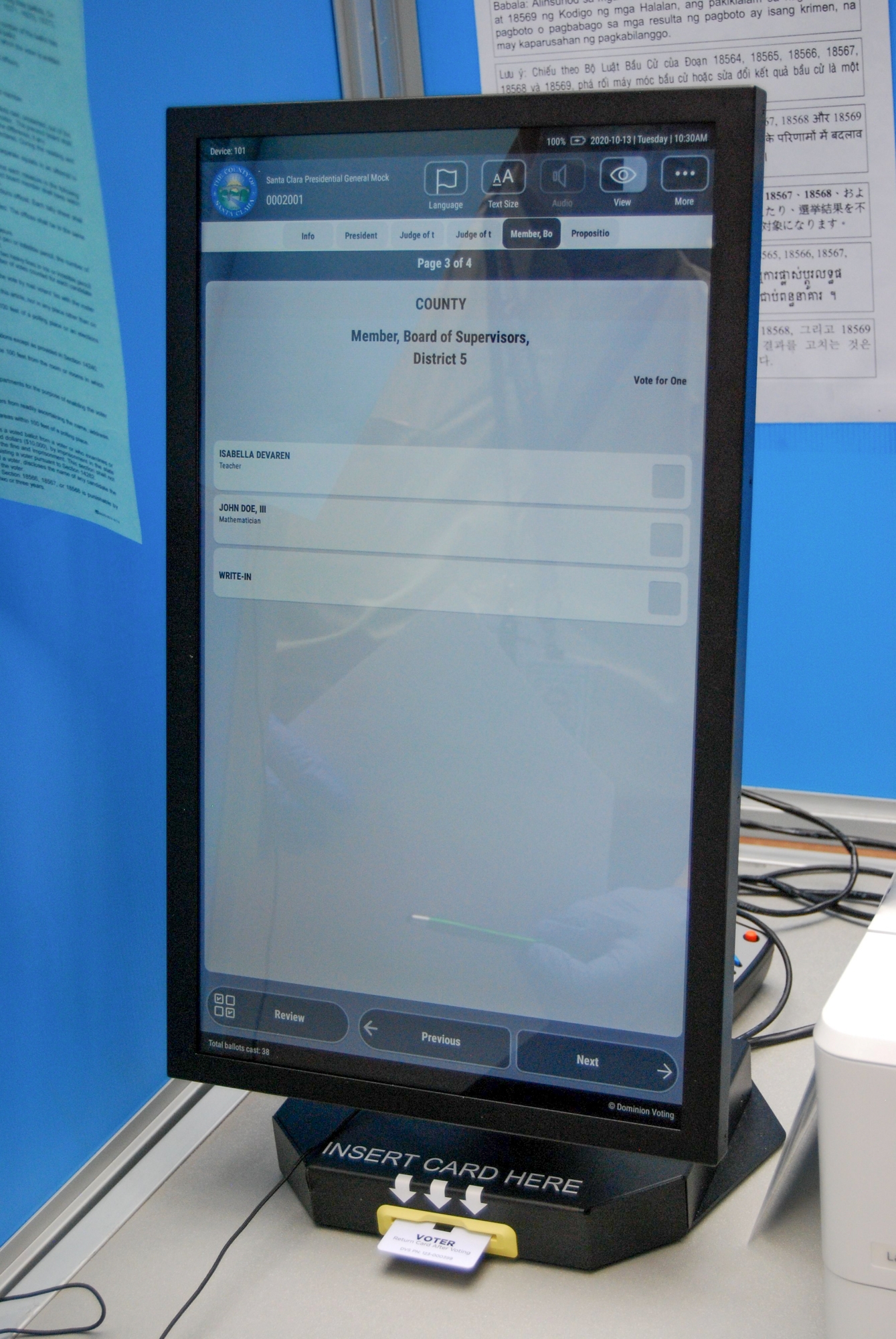One week after ballots were sent to Santa Clara County voters, early birds have already returned 38,000 of them to the Registrar of Voters.
It's a good start for what could turn out to be the largest election in county history, Registrar Shannon Bushey said Tuesday at a media event held in San Jose.
"We've received 38,000 ballots in the first week," Bushey said. "Definitely it's higher than previous elections' first week."
For the first time, the county has topped 1 million registered voters, or 83% of those eligible. That's up from just 67% of eligible voters who registered in July 2016, according to Bushey's office. Whether those intentions to vote will translate into the most ballots ever cast remains to be seen, but Bushey says she's optimistic about the turnout.
"I'm definitely expecting it to be in the 80-something percent," she said.
Bushey acknowledged concerns that have been raised about election security because of unofficial ballot drop boxes set out by Republicans in other parts of the state and people's general fears of all manner of election fraud; however, she said that she has not seen any evidence of improprieties in Santa Clara County and that safeguards have been put in place to ensure the integrity of the election results.
"Everything is going very smoothly for this election. We're meeting our goals," Bushey said.
The November election is the county's second in which every registered voter has received a ballot by mail, which can be completed at home and returned either by mail, through an official drop box or in person at a vote center. The system was implemented in the March primary under the county's new Voter's Choice Act.
That wasn't the only change to the county's election process this year. The elections office also debuted touch-screen voting machines in vote centers in March and ballot scanners that tabulated results on site. Those results, saved onto memory cards, were delivered to the Registrar's office and uploaded.
The difference in how quickly the ballot count could be completed because of the vote center tabulators was literally day and night.
"Before, we counted till 2 in the afternoon the day after (Election Day). During the last primary, we finished at 1 a.m.," Bushey said. "They're bringing back tabulated cartridges (from the vote centers). We have our results instantaneously."
In addition to expressing confidence in the election system, the registrars' staff say they are prepared to handle the volume of ballots, having added more than 400 workers to supplement the permanent staff of 90 employees. That doesn't include the 4,000 temporary employees who will staff the vote centers.
Given the anxieties over the election, Bushey, along with Public and Legislative Affairs Manager Evelyn Mendez and Elections Division Coordinator Mike Fong, answered the following questions Tuesday about what voters can expect.
Q: I mailed my ballot back. When will it be counted?
Ballots received by the Registrar of Voters will be counted in batches, after their signatures have been verified and the ballots have been sorted by precinct. The ballots are not being held until Election Day to be counted.
Q: Is the ballot that I put into a drop box being counted in the same manner as a mailed ballot?
Yes.
Q: I put my completed ballot in a drop box. How do I know it can't be tampered with before it's counted?
The drop box itself has several security features, starting with the slot into which you deposit the ballot. It only opens about an inch, so no one can retrieve ballots through the slot. Also, there are three locks on the box doors. Each ballot box is also chained to the ground so that the box itself cannot be stolen. Ballots are picked up by Registrar of Voters workers in a team of two people and brought back immediately to the office for processing.
Q: How do I know I'm dropping my ballot at an official drop box?
Registrar of Voters drop box locations are posted on the registrar's website at sccgov.org/sites/rov. If you encounter a drop box that is not at one of those locations, then it is not official. Do not place your ballot in there.
The county is using two styles of drop box -- ones used in the past and ones that are new as of this election. In 22 locations in the county, such as Palo Alto City Hall, Mitchell Park Community Center and Los Altos Library, the county's placed both the old and new boxes side by side to handle a higher volume of ballots. You can place your ballot in either one; both are legitimate.
The new boxes are labeled with the Santa Clara County seal and the words "Official Ballot Drop Box" on the front. The old one has "Ballot Drop-Off" in giant blue capital letters on the front of the box, and the county seal is on side of the box in the bottom corner.
Q: How does the Registrar's office ensure that no one other than the registered voter filled out their vote-by-mail ballot?
The voter's authenticity is determined by the signature on the back of the envelope. That envelope, when received at the Registrar of Voters, is scanned by a machine to capture the signature digitally. That signature is compared with one or more of your signatures that the elections office has on file, drawn from your voter registration card and from documents you've submitted to the Department of Motor Vehicles.
The sorting machine kicks out each ballot with a signature that doesn't match. Next, staff review the ballot signature side by side with the signatures on file. They look for common handwriting traits, such as the slant of the writing and the letters' ascenders and descenders. If the authenticity is still in doubt, the ballot is sent for review by management staff. Voters whose ballots cannot be confirmed as authentic will receive a mailed notification letter and will have until Dec. 1 to provide a signature that matches the file signature.
In the November 2018 election, 820 letters were sent to Santa Clara County voters because of mismatched signatures; 617 voters responded satisfactorily, ensuring that 75.2% of those questionable ballots were counted, according to a county election office report. (About 487,000 vote-by-mail ballots were cast during that election.)
Q: How do you ensure a person doesn't vote twice?
The ballot first received and verified by the elections office will be the only one counted. For example, if a person returns his or her mail vote-by-mail ballot in early October and then goes on Election Day to a vote center to try to vote again, the poll worker will be able to look up the person's vote status in an electronic poll book, which replaces the old ledger-style sign-in book and which has your information on file. Even if the voter is given a provisional ballot by the poll worker, when that ballot is processed at the elections office, it'll be rejected because the prior ballot for the voter has already been counted.
Q: I'm thinking of voting in person, but how do I know it's COVID-19 safe?
Vote centers, which will be open every day from Oct. 31 through Nov. 3, will be stocked with masks and gloves, which will be offered to voters who come unprepared. Gloves are not necessary but will be given at the request of the voter. Voting stations will be cleaned after each use. Social distancing protocols will be enforced. (Note that a vote center is currently open daily at the Registrar of Voters, 1555 Berger Drive, San Jose.)
Q: If I go in person to vote, I understand I'll be given a choice between a paper ballot and using the touch screen system. Why would I use a touch screen?
The touch-screen voting system, which was implemented in March, offers the ballot in multiple languages and multiple sizes of text and also includes headphones for the visually impaired. The voter will need to be capable of inserting a card the size of a credit card into a slot on the roughly 1-foot-by-2-foot electronic tablet and following onscreen instructions. When you've finished voting, the system will then print out a paper version of your completed ballot.
Q: If I vote in person, how quickly will my ballot be counted?
At the vote center, you'll feed your completed ballot into a scanner that immediately records your votes onto an internal memory card and drops the ballot into a secure bin. That cartridge is then delivered to the elections office and the tabulated results are uploaded.
Q: When the election results are released at 8 p.m. on Election Day, which ballots does that count include?
That count includes all ballots that have been received and processed, whether mailed, put into a drop box or cast at a voting center.
Q: I understand there are high-speed ballot counting machines that process the vote-by-mail ballots. How quickly can they count ballots?
Ten high-speed ballot counting machines are used to tabulate the votes on the ballots that have been mailed in or returned via a drop box. A machine can count thousands of ballots per hour. The machines are housed in a room that is under constant video surveillance.
Q: What happens when there's a mistake or confusing mark on a completed vote-by-mail ballot?
If one of the ballot-counting machines cannot determine the intent of a vote, that ballot is sent to the election adjudicators, who sit in the room across the hall from the sorting machines. The adjudicators, working in pairs, may need to decipher the name of a write-in candidate or interpret an ambiguous mark. Each ballot that is audited is marked with the number of the machine that sorted it, the names of adjudicators who reviewed it, and what the decision was.
Q: How are elections offices ensuring that they're not sending ballots to people who are not at that residence — ballots that are then filled out by other people?
According to Joe Holland, who is the president of the California Association of Clerks and Election Officials, voter rolls do indeed sometimes have the wrong information. It's often for one of the following reasons:
• Somebody died out of state and that information has not made its way back to that voter's county of residence.
• Someone moved out of the state or out of the country and the information has not been communicated to the registrar.
• A student stays home from college — a common occurrence during the pandemic — but is registered to vote near their campus.
However, as already noted above, voter authenticity is verified through the signature on the envelope. If the signature is not a match and the voter, when contacted, cannot provide a matching signature, then the ballot is rejected. (According to a recent study published by the nonpartisan California Voter Foundation, 1.4% of all the vote-by-mail ballots cast in the state's March primary were rejected for various reasons, including mismatched signatures.)
Q: What should I do if I get the wrong ballot?
If a ballot is intended for someone else and it wasn't simply delivered to the wrong address by the U.S. Postal Service, you can help the county update its voter roll by writing "return to sender" or "no longer at this address" on the envelope and putting it back in the mail, according to Joe Holland.
Q: If I suspect that election fraud is happening, what do I do?
You can report it to the Registrar of Voters; however, because the registrar has no enforcement powers, her office will then refer cases to the District Attorney's Office or the Secretary of State's Fraud Unit.
Got more questions? Post them below in Town Square or email them to editor@paweekly.com, and we'll try to get them answered.
CalMatters reporter Ben Christopher contributed to this article.





Comments
Registered user
Blossom Valley
on Oct 16, 2020 at 3:21 pm
Registered user
on Oct 16, 2020 at 3:21 pm
This is a very helpful article. Thank you.
Registered user
Sylvan Park
on Oct 16, 2020 at 9:07 pm
Registered user
on Oct 16, 2020 at 9:07 pm
Another aspect of election integrity is honesty or dishonesty in campaigns. I just received in the mail today (Friday) a hit piece against City Council candidate and former Assemblywoman Sally Lieber from "Silicon Valley Organization PAC" major funding from "California. Association of Realtors" and the "California Apartment Association." The piece claims "Sally Lieber's far-right financial ties are wrong for Mountain View."
Registered user
Old Mountain View
on Oct 16, 2020 at 9:16 pm
Registered user
on Oct 16, 2020 at 9:16 pm
Gary,
Misinformation is the political weapon of choice.
Unfortunately the First Amendment has a double edged sword, both accurate and false information is protected.
It is the VOTERS responsibility to prevent being conned by the false information.
It is up to us to work on that.
Registered user
Old Mountain View
on Oct 17, 2020 at 12:50 am
Registered user
on Oct 17, 2020 at 12:50 am
What was really funny is that Donald Trump "planted" a conspirator in his "town meeting"
It turns out the woman nodding her head in the camera was Mayra Joli, an immigration attorney and Trump Supporter. You can watch the video here (Web Link
And she has posted picture at the event showing her wearing the outfit, you can google them.
Unbelievable?
Registered user
Sylvan Park
on Oct 17, 2020 at 12:37 pm
Registered user
on Oct 17, 2020 at 12:37 pm
I received in the mail today (Saturday) another hit piece against Sally Lieber from the same businesses (Realtor and Landlord groups) supporting Margaret Abe-Koga, Lisa Matichak and Jose Gutierrez. It is the same deception.
Registered user
Old Mountain View
on Oct 17, 2020 at 12:48 pm
Registered user
on Oct 17, 2020 at 12:48 pm
When people just bother to look, the corruption in government is horrible.
Gary did you ever read the books by Donald Bartlett and James Steele the Investigative Reporters from the Philadelphia Inquirer titled:
"America: What went Wrong" in 1992
and
"America: Who Stole the Dream?" in 1996.
They did a great job pointing out how bad, both parties are corrupted, and it just got worse over time.
Registered user
Cuesta Park
on Oct 19, 2020 at 9:50 am
Registered user
on Oct 19, 2020 at 9:50 am
This answered questions that had crossed my mind, was reassuring and relevant. Thank you MV Voice and Santa Clara election team.